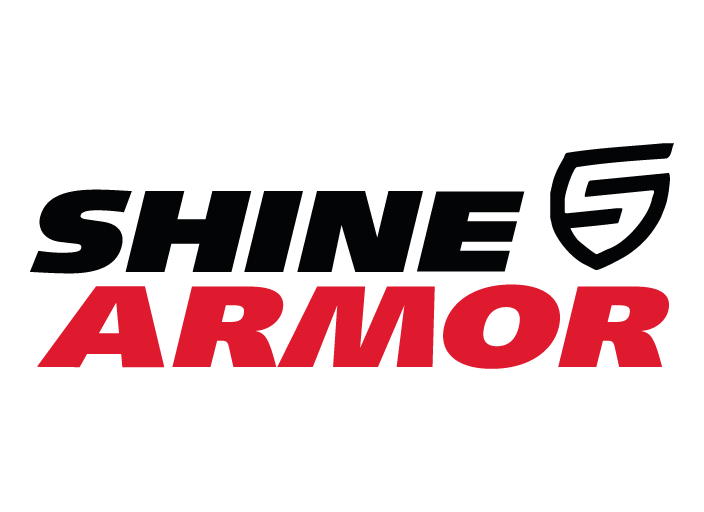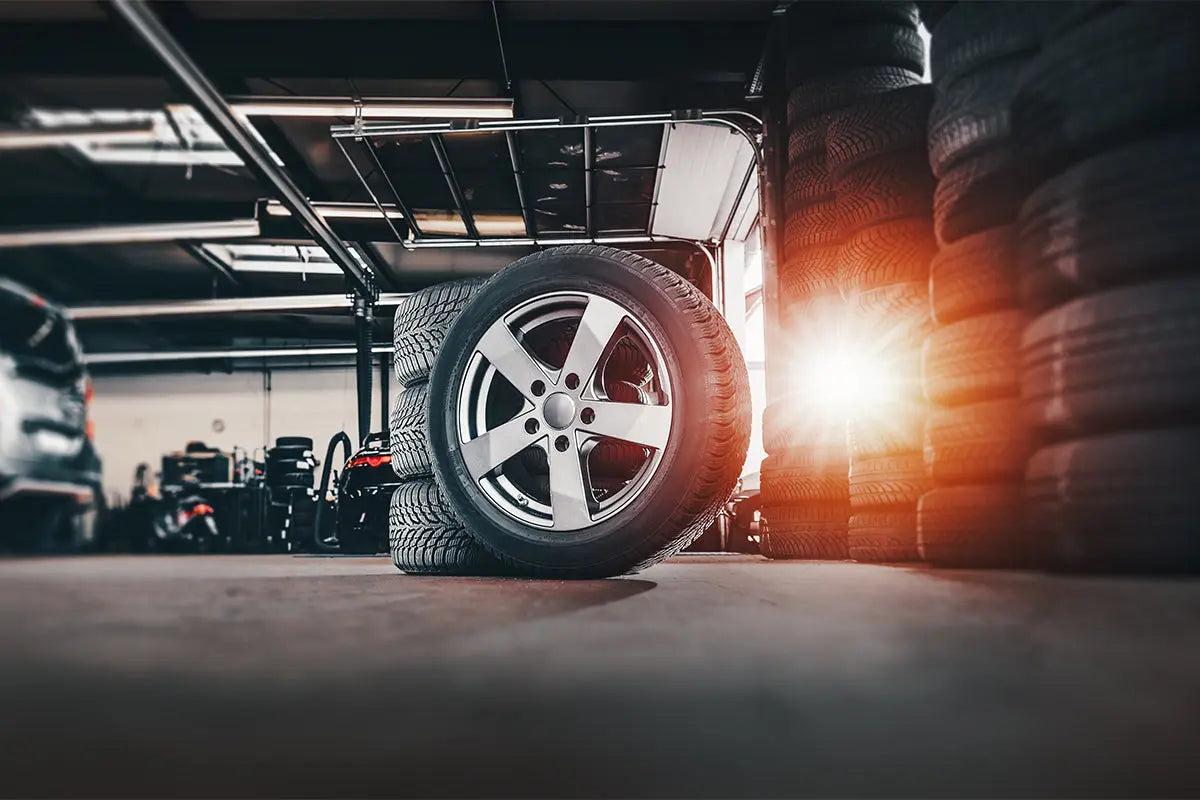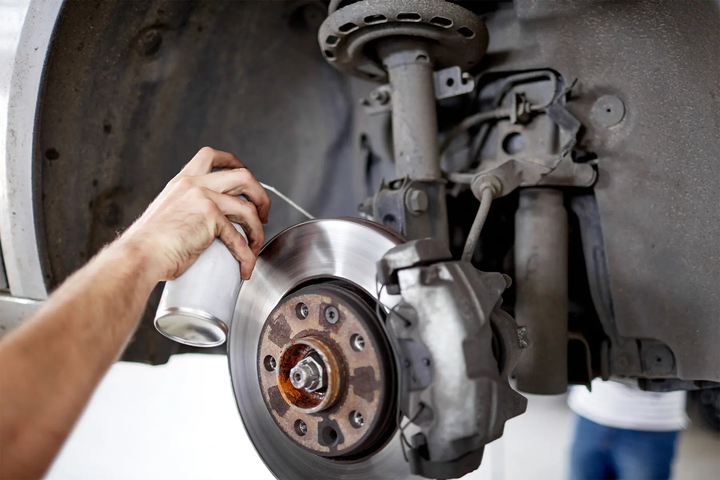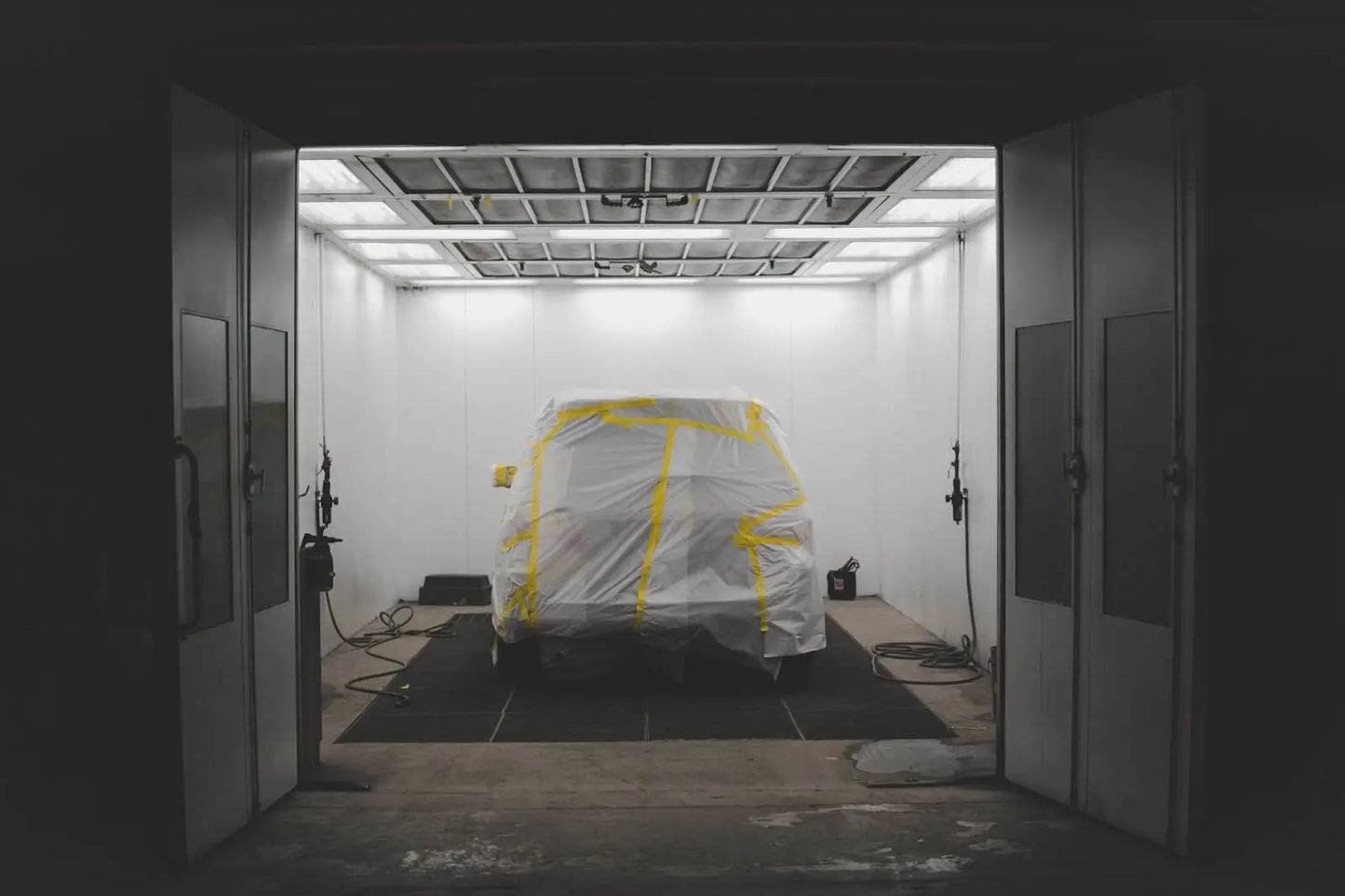
If you’ve ever decided to paint a room in your house, you know that it’s not as easy as applying a single coat. It takes both a primer and a base coat to ensure that your paint job is long-lasting and pleasing to the eye.
While your dining room needs to look great, we hope that it doesn’t get exposed to weather, rocks, bird droppings, or insects in the same way that your car does. For that reason, your car needs another layer of paint to protect its vibrant color.
This layer is called the clear coat, and it’s an essential component of your car’s appearance that can make it look brand new. Let’s talk about everything you need to know so you can make sure your car’s vibrancy lasts a lifetime. Read on to learn more in this article of shine armor blog!
Related products of shine armor:
- Graphene Ceramic Spray
- Fortify Quick Coat
- Revive Car Scratch Remover
- Graphene Ceramic Nano Glass Coating
- Anti-Fog Hero
- Car Upholstery and Interior Cleaner
Let’s Be Clear: What Is Clear Coat?
It’s very likely that there are three layers of paint on your car’s exterior. The bottom layer that you can’t see is called primer. This is a neutral layer that covers any imperfections on the base of the car while also providing a clean surface to apply the colored paint to your vehicle.
This colored paint is called the base coat. The base coat contains the color of your car. So if your car is a sporty red hue, you can say that it has a red base coat.
Finally, the top layer is the clear coat. As the name implies, the clear coat is a colorless resin that is applied over the top of the base coat. It’s the layer that makes your car look glossy and shiny. Almost 95% of cars manufactured today have a clear coat.
Read this article: What is a Good Substitute for Car Wash Soap?
Benefits of Clear Coat
Your car has this important paint layer for a few different reasons. Even cars with a matte finish have a hazier clear coat because of its benefits.
Protection
The main purpose of the clear coat is to provide a protective layer over the base coat to reduce the risk of scratching the colors on your vehicle. If you get a mark or a knick on the exterior of your car, the clear coat prevents it from sinking into the base coat.
That’s why waxing your car to restore the clear coat is essential and also why it’s pretty easy to buff out minor scratches that haven’t reached your base coat.
Also, most clear coats are reinforced with UV blockers that can help prevent fading and dulling of your car’s color due to the sun’s rays.
Read this article: Why is My Car Making a Whining Noise?
Improved Appearance
The clear coat also gives your car that shiny, glossy appearance that makes it look clean and polished. It makes the color look deeper, giving it that showroom shine that’ll definitely hike up the resale value once it comes time to part ways.
Better for the Environment
For a long time, car manufacturers used solvent-based paints to apply the base coat to vehicles. However, it’s recently been discovered that as these paints dry, they emit harmful VOCs, or volatile organic compounds, into the air.
The long-term effects of these chemicals are uncertain, but the Environmental Protection Agency suspects that some of them are carcinogens. For that reason, almost all car manufacturers are starting to shift towards much safer and environmentally conscious water-based paints instead.
The only thing is that water-based paints are a bit less durable than the previous solvent-based ones, so they require that clear coat to keep them protected. It’s also why most older cars don’t have a clear coat, as the solvent-based paint never really required it.
Read this article: How Much Oil Does My Car Need?
How To Maintain Your Car’s Clear Coat
You can think of your car’s clear coat like the enamel on your teeth. It’s a protective layer with loads of benefits, but when it’s gone, it’s hard to reverse the damage.
The good news is that it’s much easier than fixing issues from inside your car. Here are simple steps you can take to help protect your clear coat, and therefore your car’s appearance...from impending doom.
Wash Your Car Regularly
Corrosive elements such as bird droppings, tree sap, tar, or dead insects can wear away the clear coat if you leave them on the surface for too long. Use warm water and soap to try to remove them as soon as you notice them.
We also recommend washing your car by hand, as the automatic car washes often use abrasive brushes that can scratch or damage your exterior. Plus, washing the car yourself gives you the ability to focus on areas that are particularly built up with extra dirt and grime.
Read this article: How to Know if Your Car is Leaking Coolant and What to Do About It
Use Clay Lubricants and Bars
We’ve already talked about how your clear coat can protect the base coat from harm’s way, but it’s important to remove debris through the proper means, such as with a clay bar.
A clay bar looks a bit like a bar of soap, except it’s made with clay. Its purpose is to pick up loose debris on the surface of the vehicle without scratching the surface. Just spray down a spray lubricant beforehand and gently glide the bar along top.
We recommend using a clay bar at least twice a year, but you can use it as often as you want, as long as you know what you’re doing.
Shield From the Sun
While the clear coat protects the base coat from fading due to harmful UV rays, it’s not invincible. Prolonged exposure to the sun and heat can cause the clear coat to deteriorate, which puts the other layers at risk.
Try to park your car in covered areas as much as possible. You can consider getting a fitted car cover if you have to park in a driveway or on a street that isn’t shaded.
Use a High Quality Wax
Even if your car has a clear coat, it’s important that you give it a nice polish and wax frequently. We recommend that you polish your car twice a year and apply wax every three months.
Applying a wax coat is essential because it provides another layer of protection on top of the clear coat. This gives you double protection of the base coat to shield your vehicle from possible damage.
While applying wax can be a tedious process, you can use our Spray Wax Quick Coat to get professional results without the hassle. It’s easy to apply, is long-lasting, and will protect your car from harmful UV rays to keep your color as vibrant as ever.
Read this article: Touchless car wash good or bad: Effects of touchless car washes
The Clear Coat Application Process
When painting a vehicle, applying clear coat is one of the final steps. After the basecoat is applied and dried, the clear coat is layered on. Here's a simplified overview of the process:
- Surface Preparation: Before applying clear coat, the surface must be impeccably clean. Any dust, dirt, or imperfections can show through the clear coat.
- Spraying: Clear coat is typically sprayed on using professional spray guns. This method ensures even distribution and a smooth finish.
- Drying and Curing: After application, the clear coat needs time to dry and harden. This can be air-dried or accelerated using heat lamps.
- Buffing and Polishing: To achieve a glossy shine, the clear coat may require buffing and polishing after curing.
Clear Coat vs. Single-Stage Paint
In automotive finishes, there are two primary options: clear coat systems and single-stage paint. Single-stage paint combines color and clear coat in a single layer. Clear coat systems, on the other hand, separate the two. Each method has its pros and cons. For beginners, clear coat systems are often preferred because they offer better protection and are more forgiving when it comes to repair work.
Clear Coat Care and Maintenance
Caring for your vehicle's clear coat is crucial for preserving its shine and protecting the underlying paint. Here are some tips for beginners:
- Regular Washing: Wash your car to remove dirt and contaminants that can degrade the clear coat. Use a mild automotive detergent and a soft sponge or mitt.
- Avoid Harsh Chemicals: Acidic or abrasive cleaners can damage the clear coat. Stick to automotive-specific products.
- Waxing: Apply a high-quality automotive wax to provide an additional layer of protection and enhance the shine.
- Paint Sealants: Consider using paint sealants for extended protection against UV rays and environmental factors.
- Polishing: Periodically polish the clear coat to remove minor imperfections, such as swirl marks or light scratches.
How To Restore Clear Coat
Even if you protect your clear coat with the tips above, it’s still possible that you’ll notice some problem spots where your clear coat is fading over time. Fortunately, you can restore the clear coat through a process called paint correction.
This is done through a process in which the clear coat is removed with abrasive polishes that are then worked into fine lines or blemishes to level out the surface. Essentially, high levels of friction liquify the clear coat and let it “reabsorb” into your car’s exterior to give it a fresh look.
Paint correction is an advanced technique that requires rotary buffers. Unless you really know what you’re doing, you should take it to a professional to ensure it’s done properly.
With that said, you might not even need to go to an auto-shop if you use our Fortify Quick Coat on your car. It does the work of over three products to protect your vehicle from damage while also giving your car a deep, mirror-like finish. Even if your vehicle is older and has dated paint, this stuff can turn back the clock and make it look like new.
Shop by category:
The Clear Solution
No one wants a car without that iconic luster and sheen, which is all thanks to the clear coat. Clear coat paint is a colorless protective layer that goes above the base color coat on your car. Not only does it make it shine bright, but it also protects the layers underneath from outside damage.
You can help maintain the appearance of your clear coat by trying to keep it out of the sun, washing it often, and using wax spray to add a protective layer on top of the coat at least twice a year. And if worse comes to worst, you can always get your car paint corrected to make even the most dated vehicles look like new.
The Role of Clear Coat in Car Detailing
Clear coat plays a significant role in car detailing. Detailing involves the process of thoroughly cleaning and restoring a vehicle's appearance. For car detailing enthusiasts, clear coat products are essential. They can include clear coat protectants and restorers that enhance gloss and offer additional protection.
The Science Behind Clear Coat
Understanding the chemistry of clear coat can shed light on how it provides protection and enhances your vehicle's aesthetics. Clear coats are typically polyurethane-based and contain a mix of resins, solvents, and additives. When applied, clear coat adheres to the basecoat and hardens to form a protective barrier. The clear coat also contains UV stabilizers that shield the paint from harmful ultraviolet rays.
Common Clear Coat Problems and Solutions
Clear coats are resilient, but they can experience issues. For beginners, it's essential to identify common problems and understand how to address them. Some typical issues include peeling, bubbling, and hazing. Here are some solutions:
- Peeling: If you notice clear coat peeling, it requires professional refinishing.
- Bubbling: Bubbling often results from trapped moisture during application. It necessitates sanding and repainting.
- Hazing: Hazing appears as a cloudy or dull appearance. It can often be resolved through polishing and waxing.
Conclusion
In this beginner's guide to clear coat, we've explored the fundamentals of this crucial component in automotive finishes. Clear coat plays a vital role in enhancing your car's appearance and protecting its underlying paint. By understanding the types, application process, and maintenance techniques, beginners can ensure their vehicles maintain their shine and finish for years to come.
